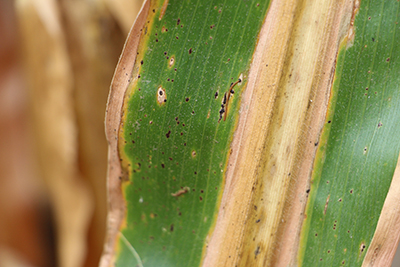Corn tar spot confirmed in Michigan
Confirmed case of tar spot in 2017 could be potential issue for Michigan corn production.

Tar spot of corn was confirmed in Michigan’s Allegan County within non-irrigated corn fields. We have confirmed the causal agent to be Phyllachora maydis. In Mexico, there is an additional species, Monographella maydis, which forms a complex with Phyllachora maydis to cause greater yield loss. So far this additional species has not been confirmed in the U.S.
In 2015, tar spot was found in the U.S. for the first time in Indiana and Illinois. Tar spot symptoms were observed in Michigan in 2016. Given how new this disease is, it is unknown what impact it will have on yield.
It is not known at this time if any particular management strategies will need to be implemented. However, if you have an infested field, consider cleaning the combine before moving to a new field, as moving debris may move the pathogen.
Michigan State University Extension advises keeping an eye out for this disease as we approach harvest. Spore-producing structures are produced by the tar spot fungus on the leaves, and as the name suggests, they resemble black spots of tar that feel bumpy to the touch and cannot be easily rubbed off.
See the following YouTube video from MSU for further information.
If you suspect tar spot, please submit a sample to MSU Diagnostic Services free of charge courtesy of the Corn Marketing Program of Michigan. When submitting samples, be sure to indicate the location where the sample was collected.

Tar spot on corn.
Dr. Chilvers’ research is partially supported by the Corn Marketing Program of Michigan and Project GREEEN.



 Print
Print Email
Email


